There’s a lot of confusion about chevrons, piles, and various other triangular charges and field divisions. In this article, I will explain the differences between the various charges and field divisions that are created by joining two lines at an angle. These will include:
-
- Central ordinaries:
- Chevron
- Pile
- Peripheral ordinaries:
- Chief triangular
- Gyron
- Canton
- Quarter
- Gusset
- Field divisions:
- Per chevron
- Chapé
- Chaussé
- Vêtu
- Central ordinaries:
Chevrons

A chevron is a heraldic ordinary, shaped like a large upside-down V. Here is an example, the arms of the Earls of Stafford: Or, a chevron gules.
Chevrons, by design, should be centered on the field both vertically and horizontally and fill all of the available space. In this standard chevron depiction, the charge divides the field visually and distinctively into two parts, while creating three relatively equal spaces in the dexter chief, sinister chief, and base portions of the field.
Chevrons can vary their width and angle, depending on what else appears on the armory. A chevron might be steeper if long, palewise charges appear around it (e.g. Or, a chevron throughout between three swords gules). It might be shallower if more compact charges appear around it (e.g. Or, a chevron between three suns in splendor gules). It might be wider if charged (e.g. Or, on a chevron gules three crescents palewise Or). It might be narrower if multiple iterations appear on the field (e.g. Or, three chevronels gules).


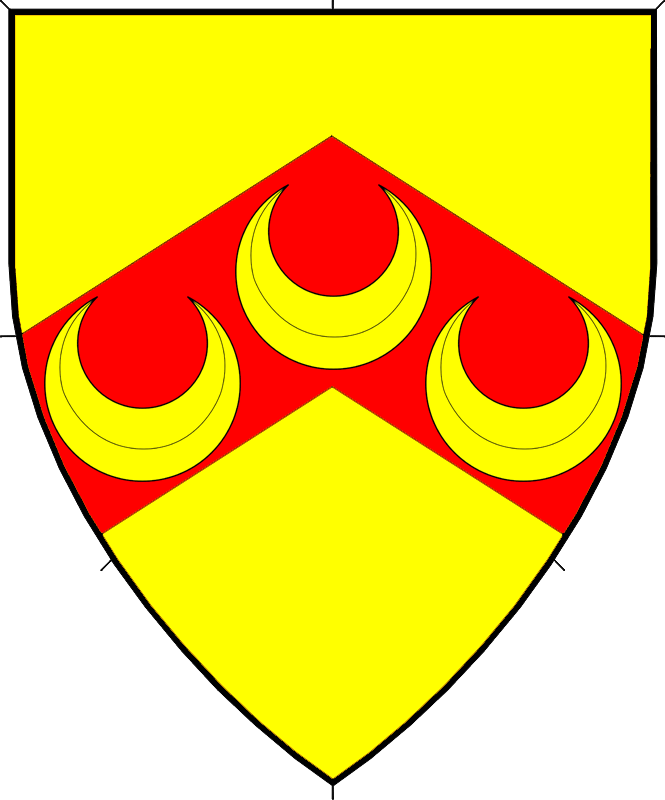
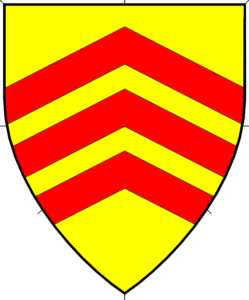

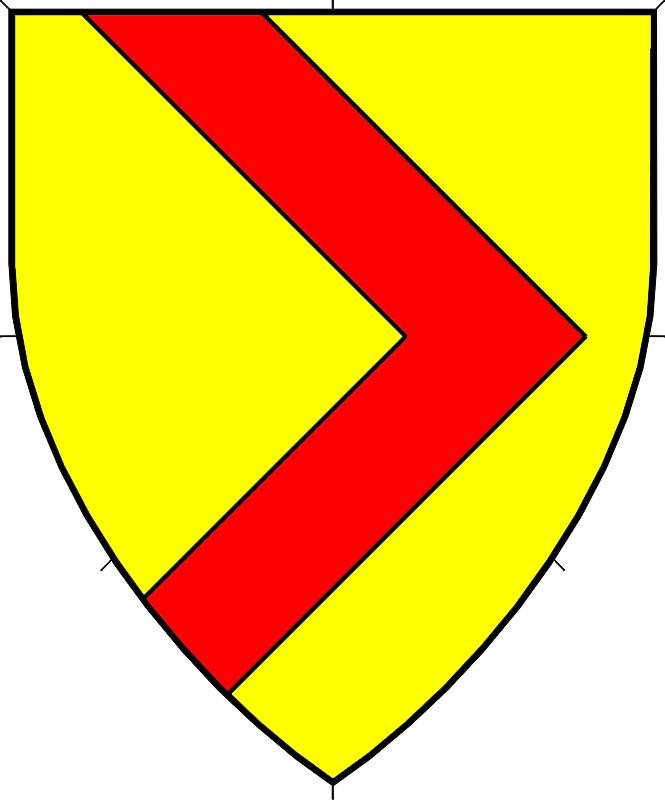






Piles
There are several charges formed by two lines issuant from the edge of the field and meeting at some point within it. The location of the vertex and points of issuance determine the charge.
The most prominent of these charges is the pile. Considered a central ordinary, the pile is a long triangle issuant from chief, approximately a third of the width of the field and nearly throughout, with the point in base. Piles can appear in multiples, usually “in point” or converging towards the same area (e.g. Argent, three piles in point purpure), and have been found issuant from other parts of the field such as dexter chief (e.g. Argent, a pile bendwise purpure) or base (e.g. Argent, a pile inverted purpure).
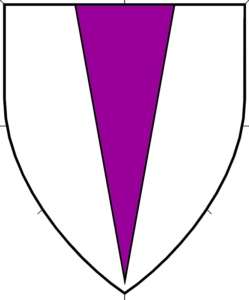



Peripheral Ordinaries
Pointy peripheral ordinaries include a quarter, which is formed by horizontal and vertical lines meeting in the center of the shield to form a square in one corner of the shield, a canton, a smaller version of the quarter, a gyron, formed by a horizontal line and a diagonal line issuant from dexter chief and meeting in the center of the shield, and a chief triangular, with lines issuant from the dexter chief and sinister chief and meeting approximately one third of the height of the field from the chief edge.




Finally, we have the gusset. Found in pairs, a gusset is formed by a line issuant from base meeting with a line issuant from either dexter or sinister chief, at a point offset from center.
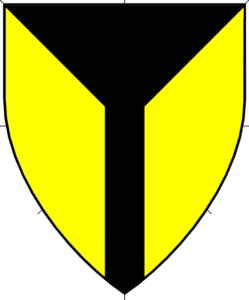
Field Divisions
Much like a chevron, a per chevron line of division is shaped like a V, and is centered on and issues from the sides of the field. Like the ordinary, the line of division can be inverted or couched from dexter or sinister, and its depth and angle can change relevant to the charges on the field.




And, like the chevron, the per chevron line of division must issue from the sides of the field. If the field division is throughout and issues from the corners rather than the sides of the field, then it is not per chevron at all, but instead blazoned chapé or chaussé, stylized representations of a mantle and chausses, respectively. A combination of the two, resembling a lozenge throughout, is called vêtu (French for “vested”). Unlike per chevron, the outer portions of the field — dexter chief and sinister chief for chapé, dexter base and sinister base for chaussé, and all four corners for vêtu — cannot be charged.



How to Tell the Difference
If you’ve been noticing that it’s difficult to differentiate between, say, per chevron, chapé, and a pile inverted, you’re not alone. The curved sides of the header shield frequently obfuscate where the lines issue. So while looking at the three examples on squares make the difference clear (per chevron throughout issues from the sides, chapé issues from the corners, and a pile inverted throughout issues from base), on an escutcheon the differences are less obvious.




Fortunately, we can use context clues with other charges to identify the vague element. If there charges in dexter or sinister chief, the design cannot be chapé. A charge in base with no other charges make it more likely to be chapé than per chevron throughout or a pile inverted. A device with charges in all three sections are always reblazoned as per chevron. And a charge overlying the line of division is almost certainly a primary charge over a per chevron line of division.




Final Notes
The commentary above is accurate for core style heraldry as of this writing (September 2019), and intentionally avoids discussion about complex lines of division and regional styles that would require an individually attested pattern. I’ll continue to update this article if Wreath changes College policy.